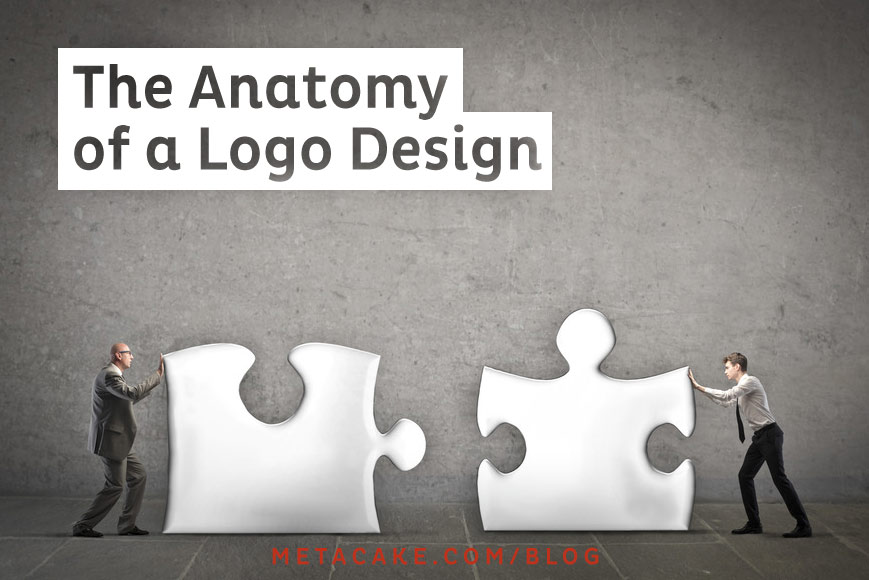
The Anatomy of a Logo Design
Most people think brands and logos are the the same thing.
News flash: They’re not!
But with decades of experience building brands and designing logos, we’ve noticed this one particular misconception just won’t go away.
Part of the confusion may come from the word “brand,” which was first used in the context of branding animals. Your brand is your mark on the animal so other people know the animal is yours. But, that mark is not your brand. That mark is your logo.
Want to learn more about what a brand really is? Check out this post!
What is a Logo?
Your logo is a visual representation of your brand in a single mark. It’s a common point of engagement across websites, products, brochures, social media, etc.
The goal is to create a visual memory and an emotional feeling about your brand. Your logo provides depth, allowing enough headroom to add new emotional layers each time someone has an experience with your brand.
Yes, your logo should pack an emotional punch. But that doesn’t mean all of your brand’s concepts and values need to be explicitly designed into your logo.
In fact, the most successful and memorable logos are great because of their simplicity. These logos are so clever because they convey certain feelings and elicit emotional responses in a very subtle but powerful way.

The Logo Design Process
At Metacake, we have a detailed process that we follow for every logo we create. Because of the importance of a logo, we believe that each of these steps is crucial to creating a powerful and memorable logo.
1. Discovery
The first step doesn’t involve diving headfirst into graphic design software and churning out concepts for review. In fact, that’s not even close to the first step.
The logo design process begins with discovery, starting with the name of your company. Why was it chosen in the first place, and what do you want that name to mean?
What is the vision of your company? What are its values? What are its goals?
We also need to understand your customers. What are their problems? How does your
company solve those problems? What motivates your customers?
What do people think of your product or company? What emotions do they feel? Why do they love or hate your product or brand?
2. Concept Brainstorming and Exploration
When we perform this step at Metacake, we start by throwing a bunch of ideas and concepts out there, and watching where it leads. Think whiteboards and notebook paper or high-end glassboards and moleskins for the ad agency folk. Classic brainstorming.
Then, we start to prioritize those ideas and concepts. Which ones are true to the brand? Which ones elicit the emotional response we’re looking for? And of course, which ones should we save for the company blooper reel?
There’s definitely a “weeding out” process involved. We boil it down to a few concepts, and focus on creating initial designs based on those. The key is to avoid trying to produce a finished product right out of the gate.
Initial concepts are done in black and white. After all, a great concept should look good in black and white. This removes the distraction of color and creates a level playing field for the top design concepts. We only add color after we choose the best concept.
Also, it’s not uncommon to focus exclusively on the logo mark and add the name to the mark later on in the process. Again, we want to remove distractions that can be created by using certain fonts, colors and text sizes.
3. Finalize the Concept
This is when your logo really begins to come to life. We choose one concept and refine it.
We add color, the name, and a tagline to the logo mark. We test different types of treatments and layouts. All of these decisions are based on the emotions and feelings that you want your brand to communicate and take into account the applications on which the mark will be used.
This can’t be accomplished, for example, by simply choosing a font from the standard Photoshop list. (We may use one of those as inspiration, but we typically create your font from scratch.) Every component of your logo must be unique to your brand.
4. Create a Style Guide
Finally, we create a style guide. A style guide is a simple set of rules to ensure the logo is used in a way that is consistent with the brand. This also includes your logo in various colors, horizontal and vertical orientations, and a number of file formats so you use the right version for the right application.
The anatomy of a logo design may not be as complex as the anatomy of the human body, but it’s definitely more complicated than most people realize.
Discovery. Brainstorming and exploration. Finalizing the concept. Creating a style guide. All of these are essential steps if you want a logo that makes and maintains an emotional connection with your customers, and represents your brand well.


